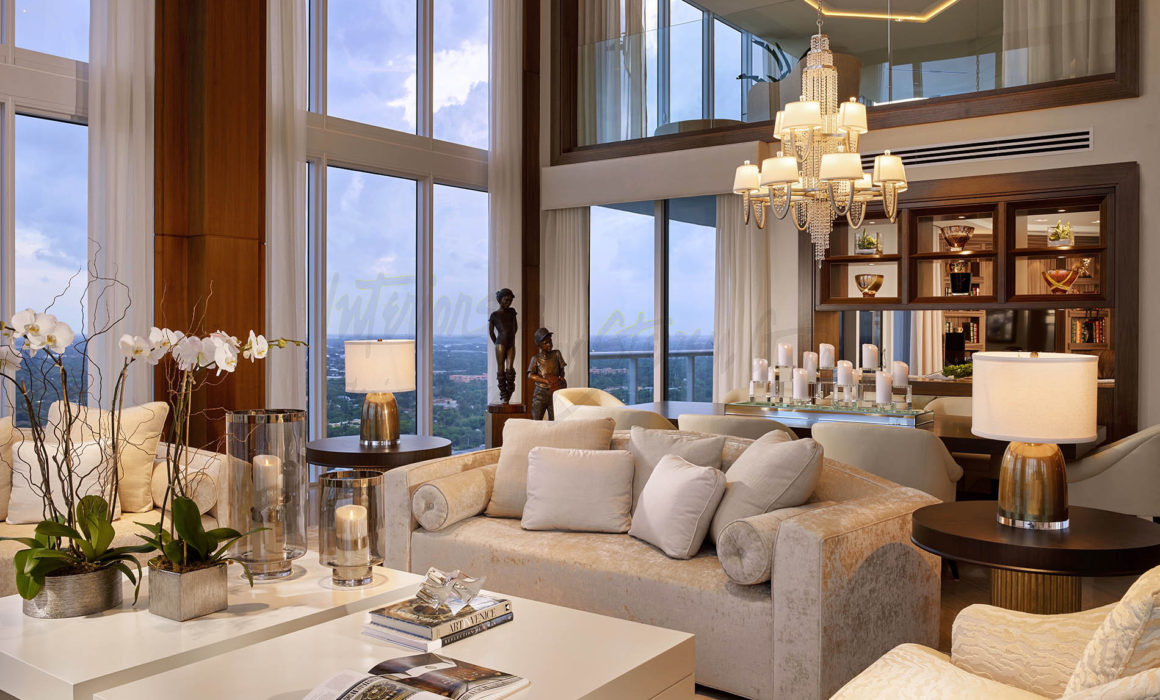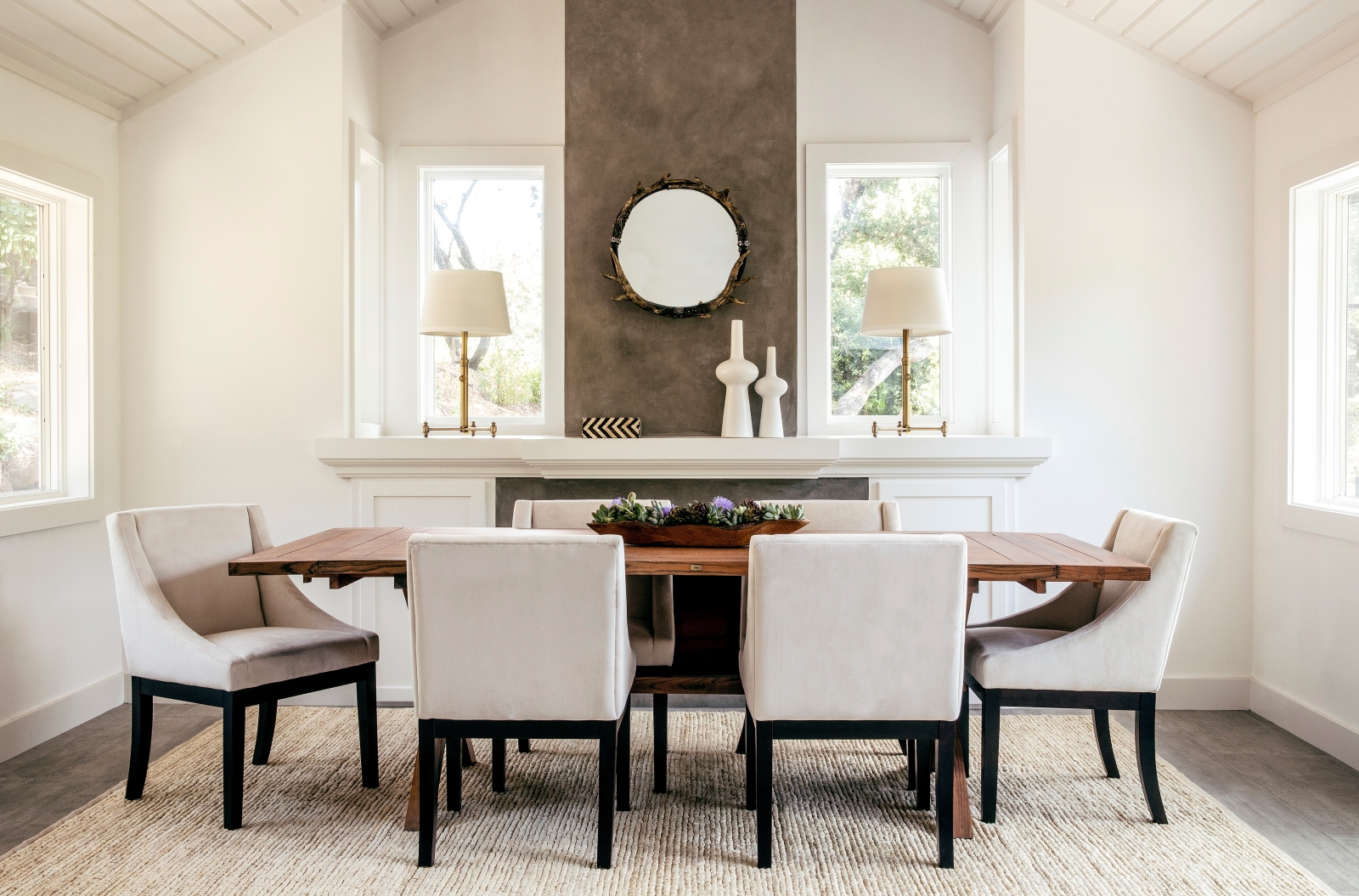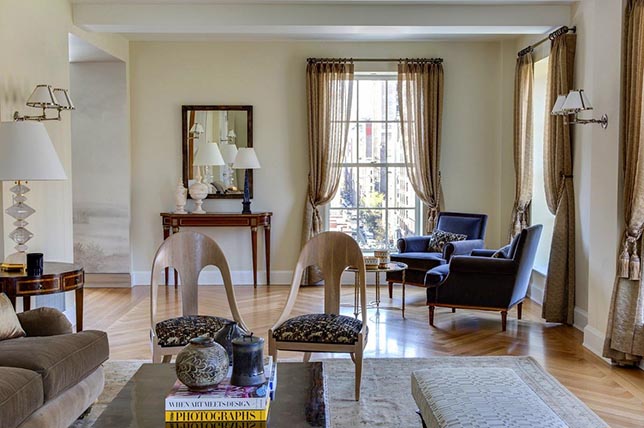Creating love at first sight, one home at a time
Table Of Content

Designers use inspiration from various styles, instead of just a single one, to create a unique style that gives the Home a ‘homely’ yet modern feel. In this Creekside residence, we wove our client’s collection of antiques in with clean-lined sofas and chairs. We chose a neutral color palette of whites and creams to complement the exposed brick and traditional hardwood floors. Cobalt blue accents create a serene and relaxing space while adding visual depth. Metallic accessories, chic light fixtures, and colorful art infuse personality into the design without taking your focus off the furnishings. To achieve the perfect blend of modern and traditional designs, interior designers need to do their research well.
Why Is Transitional Style So Popular?
Touches of black and brown add contrast to the design’s white color palette. Layered metallic accessories give the design a glam, feminine feel and soften the strong, masculine lines. One of the most sought-after looks, transitional interior design has been popular for decades. As a response to the bare minimalism that Mid-Century Modern spaces tend to embrace, transitional styles are warmer, more collected. They marry the traditional with the modern in an unexpected way that looks effortlessly timeless.
How to bring transitional design into your home

In the transitional style, designers rely on contemporary lighting – they push boundaries with quirky and unique light fixtures that flood light into a room. When it comes to the transitional home decorating style, it’s important to pick the right transitional furniture pieces. Overall, transitional style textiles are versatile and timeless, and they can work well in a variety of design styles and settings. To successfully blend transitional and modern styles, it’s important to find a balance between the two.
75 Beautiful Living Room Ideas for Decorating Inspiration - Good Housekeeping
75 Beautiful Living Room Ideas for Decorating Inspiration.
Posted: Wed, 03 Apr 2024 07:00:00 GMT [source]
Monochromatic Gallery Walls
Artwork and accessories are carefully curated to add personality to the space without cluttering it. Transitional style favors a less-is-more approach, with art pieces that have a modern flair but are framed in a way that nods to classic styles. Textiles in Transitional interiors often feature a variety of textures to add depth and interest to the space.
In Transitional design, accessories are used sparingly but effectively to create focus without clutter. Every piece is carefully selected to contribute to the design narrative, ensuring that each accessory has a purpose and a place. This approach is evident in the clean lines of the fireplace surrounds and the cabinetry in the images. As we explore the nuances of this versatile design approach, we uncover the secrets to achieving a balanced and harmonious home that transcends fleeting trends and stands the test of time.
transitional living room ideas that nail this old-meets-new style
Now that we’ve defined what makes for a traditional style home, here’s everything you need for transitional style interior design ideas throughout your home. In general, any transitional style home should boast a selection of extra’s that are full of personality and visual appeal while bringing you joy with the thrill of the hunt. What’s one simple thing you can do to make your space feel more transitional? These shades will make your space feel homey and traditional, and if you render the colors in sleek silhouettes, they should leave your space feeling pretty modern, too.
Modern style and heirlooms make transitional design success - Homes & Gardens
Modern style and heirlooms make transitional design success .
Posted: Tue, 23 Apr 2024 09:07:50 GMT [source]
Traditional Vs Transitional Style Interior Design: What’s The Difference?
Here, we break down all the defining characteristics of transitional style and share tips for decorating with the popular aesthetic. This post is part of a Design Style Guide Series, where I teach you all about different design styles and how you can be inspired by them, and choose any of them to define your personal and brand style. Proportion is carefully considered in Transitional design, with a focus on creating a balanced space. Furniture and decor are scaled to the room to ensure that the space feels harmonious and well-composed. Wood in Transitional interiors is often of a medium shade, striking a balance that works with a variety of color schemes. It is typically finished in a way that enhances the natural beauty of the grain, adding warmth and organic character to the space.

The focus on comfort is evident in the ample seating and the plushness of the cushions. Here we will look at some key characteristics of this style, where it came from, and how you can incorporate it into your own home. Rachel Silva, the Assistant Digital Editor at ELLE DECOR, covers design, architecture, trends, and anything to do with haute couture. She has previously written for Time, The Wall Street Journal, and Citywire.
Basically, it’s a mishmash of decor elements, but a thoughtfully curated one. To better understand how to spot transitional design, it’s helpful to understand the elements that make up this popular home decor style. According to Okin, you’ll often find “texture, tone-on-tone neutrals, and lush upholstery that is clean-lined but neither modern nor traditional or fussy,” in transitional spaces.
When it comes to perfecting such a heady and visually striking and unique mix, issues are certain to arise when looking to make everything work together while evoking true transitional style. Be sure to sprinkle in a few pops of color—Shaw and Moyer specifically recommend it. And if you’re worried about these accents overwhelming your space, favor colors that are bold but not vibrant like navy or forest green. If you have any in your home, consider balancing it out with a little modern art.
Artwork, home decor pieces, furnishings, and fabrics – are all great ways to add a pop of color, pattern, or abstractness to the interior space. These also add character to the room and help you define it based on the client’s personality. A good balance between the two can give the room a very elegant, yet quirky persona. Traditional spaces are typically neutrally coloured; think of light colours like pastels and beiges. Transitional styles, on the other hand, are not afraid to mix colours and patterns. Transitional styles are more contemporary as compared to leaner traditional styles.
Since transitional design focuses on blending traditional with modern, understanding our clients’ family history is an essential part of our design process. Layering family heirlooms or memorable pieces with modern ones is what creates a timeless, collected interior that tells your unique story. The transitional décor style is all about curating spaces that exude an air of simplistic beauty.
Comments
Post a Comment